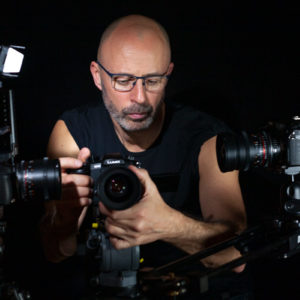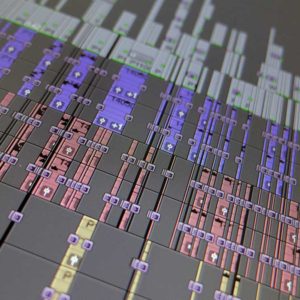To enable UHD video production and even higher resolution filming and editing I’m always adding some new kit to my gear list to stay up to date. Higher resolution video production can improve visual quality and enable more creative freedom in post-production.

Ultra-High Resolution or UHD
The latest addition to my filmmaking equipment kit list includes the latest Lumix cameras which now allows me to film higher-quality UHD and 4K footage. These new cameras will now enable me to shoot UHD or 4K and then either transcode down to 1080p for editing or edit in UHD or 4K and use FrameFlex to pan and scan for 1080p delivery. Either way, I will be able to produce higher-quality images.
Compact kit
As a freelance videographer and filmmaker when travelling around the UK and Europe filming it is important for me to be able to carry my filming and lighting kit on different forms of both private and public transport. With the small size and lightweight of the Lumix cameras ensures I can now carry two or more cameras in my filming bag along with my sound recording equipment, grip and LED lights. This enables me to film two different framed shots of interview type setups which can really help in the edit especially if you are cutting between the same person in vision.
I’ve been able to greatly improve the visual quality of my filmed interviews with the shallow depth of field that the Lumix camera can offer with the right lenses. The visual quality has been improved further by adding both a soft-box and grid on my key light LED panel. The soft-box gives a far nicer look to the image rather than using the LED panel on its own. I’ve also been using an additional LED panel to ‘cut out’ the interviewee with a close proximity back-light.
External digital recorder
Another addition to my kit has been the Atomos Ninja Blade. I was recently co-producing, co-directing and filming a music video. We built a black box space in the filming studio using a scaffolding rig and black wool serge. To light the set I rigged and installed 4 x watt lights (with fresnel lenses) and 4 x 650-watt profile lights that were all connected to two 3-way dimmers and a three-phase mains supply. I wanted to make sure that I was exposing the performer’s skin tones accurately so brought the Ninja Blade to help with that. Connected to the Lumix via an HDMI cable I was able to check the luminance levels and make sure I wasn’t underexposing or overexposing the shot. I was reassured to be seeing the recorded image on a slightly larger screen which also helped me to check the focusing with its focus assist. The Ninja Blade also saved me a lot of time in the edit as I could record the HDMI output of my Lumix as Avid DNX based media on its internal SSD. I could then avoid the transcode process when I started editing with the filmed footage in my Avid.
It was interesting to note that the DNX180 media from the Ninja Blade OWC Mercury Extreme Pro SSD cards had deeper blacks than the .mov files that the Lumix created on its San Disk SDHC card. As you can see from the picture the Ninja Blade can also record higher resolution DNx 220 if required.
All the shots from the music video looked great with no hot spots so I think the Ninja Blade really helped me expose that black box shoot correctly. Most of the time I mounted it on the hot shoe of the Lumix which was fine on the tripod. I also have a half cage and full cage option for my Lumix cameras so that I can mount the monitor on my fig rig or another motion-based grip.
By filming in UHD I can test and explore the UHD video production workflow process. This enables me to ensure that I can deliver in either HD or UHD as requested by my clients. Even if projects do not require delivery in HD I can still improve my HD output image quality when filming in UHD.
The Atomos Blade can now also be used to help me monitor my Lumix shot if need be on a long HDMI cable when I am filming with two cameras. Modern UHD video production technology is really helping me to create very professional creative work.



